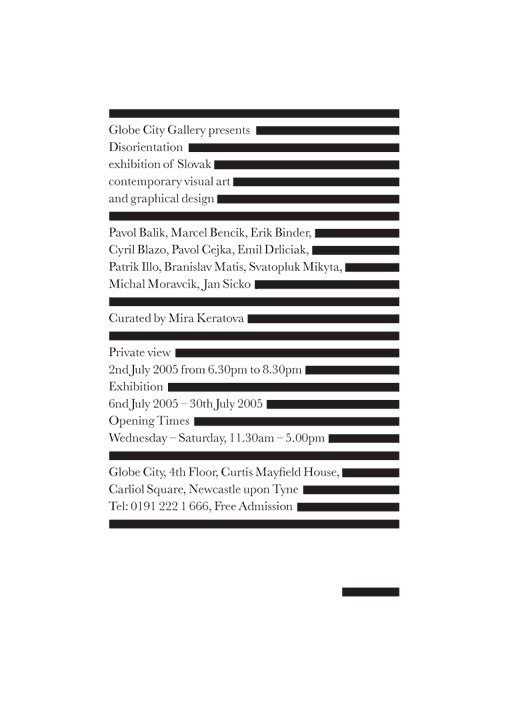On Kitch: Dead man walking

This article is interesting, both in itself and how it was received. While living in Iceland I sent it to ?Morgunbladid?, but it was denounced as ?chaotic?. When I asked the editor to point out mistakes, I got a reply where the ?faults? basically consisted of my critical view on Kant.
It is now 280 years since the German philosopher Immanuel Kant was born in pietistic Preussia. Despite of being short, he was a great man in his time and since his death he has only grown. More than any other philosopher he has become a part of the lives of modern men.
His moral philosophy is repeated daily even by the most uneducated people: ?It?s the thought that counts?. We believe that ?good will? (good intentions) are more important than the deed itself, and we feel ashamed if we ?egoistically? act to pursue personal happiness. All according to Kant.
But personally there is one thing that interests me because it affects my situation a great deal. I am talking of Kant as the corner stone of all ideas about art.
That art is a German concept from the 18th century is not known to everybody, nor how important Kant was for this concept.
All later influential ideas on art are comments (based) on Kant.
When Kant wrote the Critique of Judgment in 1790, it had been established for some 30 years that painting, sculpture, architecture, poetry and music constituted the new term fine art as opposed to the other groups such as the liberal arts and the mechanical arts. Now the job was to define the rules.
Kant won, and because of the omnipresence of his ideas, artists and art-historians are today quoting Kant without knowing it themselves. They believe in the importance of originality and the unimportance of skill ? ?it is when you do not know what you are doing, that you are creating art?, to quote Kant. Not to mention how Kant?s aesthetic term ?indifference? permeates all artistic production and writings about art; art must by no means turn sentimental or emotinal. This term is the origin of modern, flat painting as well as postmodern irony. The above mentioned is also the reason for artists like Anthony Gormley saying that figurative painters are ?stupid? ? they are unoriginal, skilled and often try to be emotional. Gormley knows he has the whole artworld in his back.
Artists and art historians alike have embraced these ideas, or, rather, were created by them, and the best is that they can feel they thought of these ideas themselves. History is reversed and suddenly it is Kant who had the same ideas as we do now.
Another basic principle of the Art system is the division of labour between artist and art historian (also a kantian imperative), and this is closely connected with Kant`s idea of the original and creative genius. The artist, in order to be a genius, must be like a force of nature and create his own rules. But in doing so, says Kant, he is not always aware of what is best for him. Therefore he must be looked after, and this is the job of the critic/art historian.
Artists, therefore, are ment only to be mere suppliers of raw material so that the critics can choose those who best illustrate the kantian imperative. Consequently, most artists mumble, say nothing or repeat clichèes like ?I loose control over myself when I work? in order not to annoy the critics who hopefully will pick them. But both obey his moral philosophy where he states that the ?principle of personal happiness? is forbidden. Especially art historians tend to be grumpy; I have met a few, they are quite good at it.
The smart thing Kant did was to write about everything but the actual work, because, as he orders you to believe, the beauty lies not in the work but in your experience of it. And when the spectator`s feelings are more important than the work itself, we are left with a mentality that totally disregards the qualities inherent in the actual painting. It now becomes possible to say that anything is Art because I ?feel? that it does something to me. And it becomes possible to say that a bad painting is equal to, or indeed better than, a good painting ? ?it is just good in a different way?.
Ok, I can at least admit that Kant was cunning, if not smart. He takes the glory from the skilled and gives it to the untalented. With his aesthetical philosophy, Kant turned all values of painting upside down. Originality, f. ex., was previously totally fine, but not important at all. To Kant it is what separates good from bad. Therefore, art historians could say that Picasso`s Les Demoiselles d`Avignon actually is formally a bad painting, but because it started a trend it is good instead.
The problem with Kant`s ideas is that if originality really was a serious criteria of quality, it would logically have to follow that the last paintings of Rembrandt must be totally dismissed because he was trying to imitate the Renaissance painter Titian. And it would mean that the whole of the Italian Renaissance would have to be dismissed because the Renaissance was an attempt at copying the Greek culture. This unoriginality should, by the way, make us think of the Renaissance as kitsch rather than art. But more important, it shows us that ?originality? is a totally unsustainable criterion because it disregards quality. Not to mention the nepotism necessarily involved in such an idea, concidering how all post-1900 Art is a copy of either Matisse of Duchamp. Still ?originality? is used shamelessly to describe those who illustrate Kant best, i.e. are most unoriginal since they illustrate 214 year old ideas. In short, Kant was wrong.
The problem is that an art-historian is like a mixture of an historian of religion (who studies religion) and a theologist (who actually believes in it). Similarly, the art-histiorian partly studies the history of painting objectively, but in addition also believes that painting before the 18th century can be labelled ?Art?. Transfering a 18th century term on to the past could maybe be excusable had they not brought the Art ideas along with it. A person who mixes pragmatism and belief in such a way cannot, alas, see through the metaphysics of ?originality?.
However, the most puzzling thing about the idea of Art is that it is based on a Preussian pietist who hated the idea of personal happiness and, still worse, knew virtually nothing about his subject. More puzzling is the fact that those familiar with his philosophy know about it and in a way think it is ?cool?. Even more puzzling is the way they still regard him as the most intelligent man that has ever lived.
Jan-Ove Tuv,
Kitschpainter.

